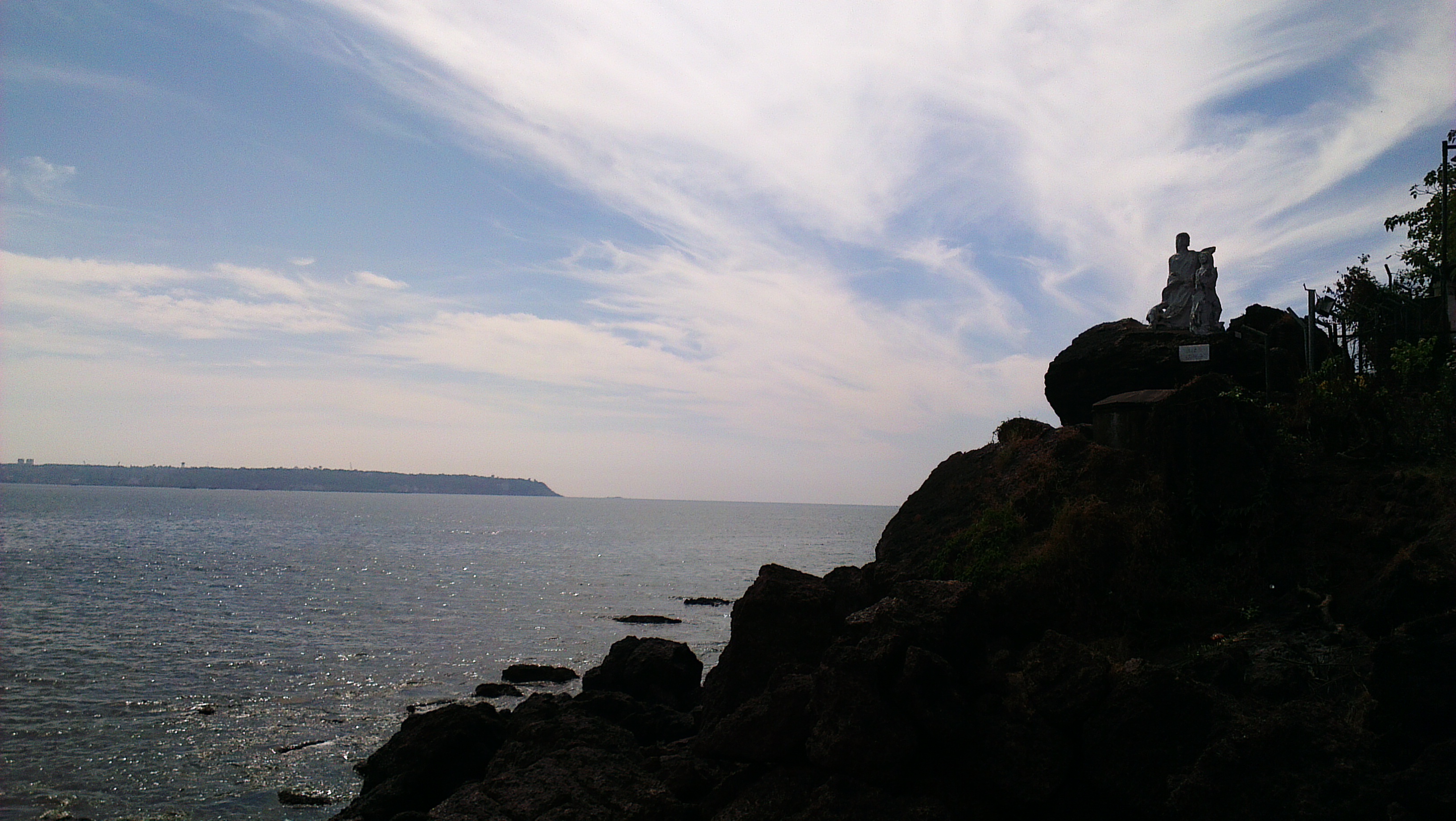Seven kilometers from Panaji, Goa’s capital city, as the moonlight hits the crashing waves at the rocky Dona Paula beach, an apparition rises, floating to the shores, crying in its anguish. She’s a lady, stately and elegant, wandering and lost, gliding on the rocky shores of the hammer-shaped headland that divides the Zuari and Mandovi estuaries, the two major rivers of Goa. She’s naked and wears nothing but a shiny pearl necklace that glitters around her neck. Her long hair whip and gasp, constantly in motion, like the waves she glides on. She walks up the steps, reaching the viewpoint so popular with tourists during the day, and cries out in pain, a silent scream that dissolves in the crashing of the sea.
Two whitewashed statues, ravaged by the salty air, stand by the bay. Even through the corroded marble, the two lovers look away, one to the east, one to the west. I imagine Paula to be a soft spoken, polite and cultured Portuguese. The official story says she was part of an extremely affluent family, the daughter of the Portuguese Viceroy of Jaffnapatnam, in Sri Lanka. Her family arrived in Goa in 1644 which is when she married Dom Antonio Souto Maior and became Paula Amaral Antonio de Souto Maior. She was a kind woman, who helped the villagers and worked for the betterment of the local peole. So much so that when she died, the fishermen renamed their village after her. Her tombstone, says the same version, lies in what is now the official residence of the Governor of Goa, at the westernmost tip of Dona Paula. In the Chapel at the Governor’s Palace at Raj Bhawan, she lies. There on her tombstone, is an inscription in Portuguese by her inconsolable husband, who begs those who might read it to pray for the salvation of her soul. Which makes me question. What would such a kind hearted, generous lady would’ve done to need the blessing of salvation from strangers till eternity? What crime has she committed that she hasn’t been able to find peace in more than three hundred years? 

